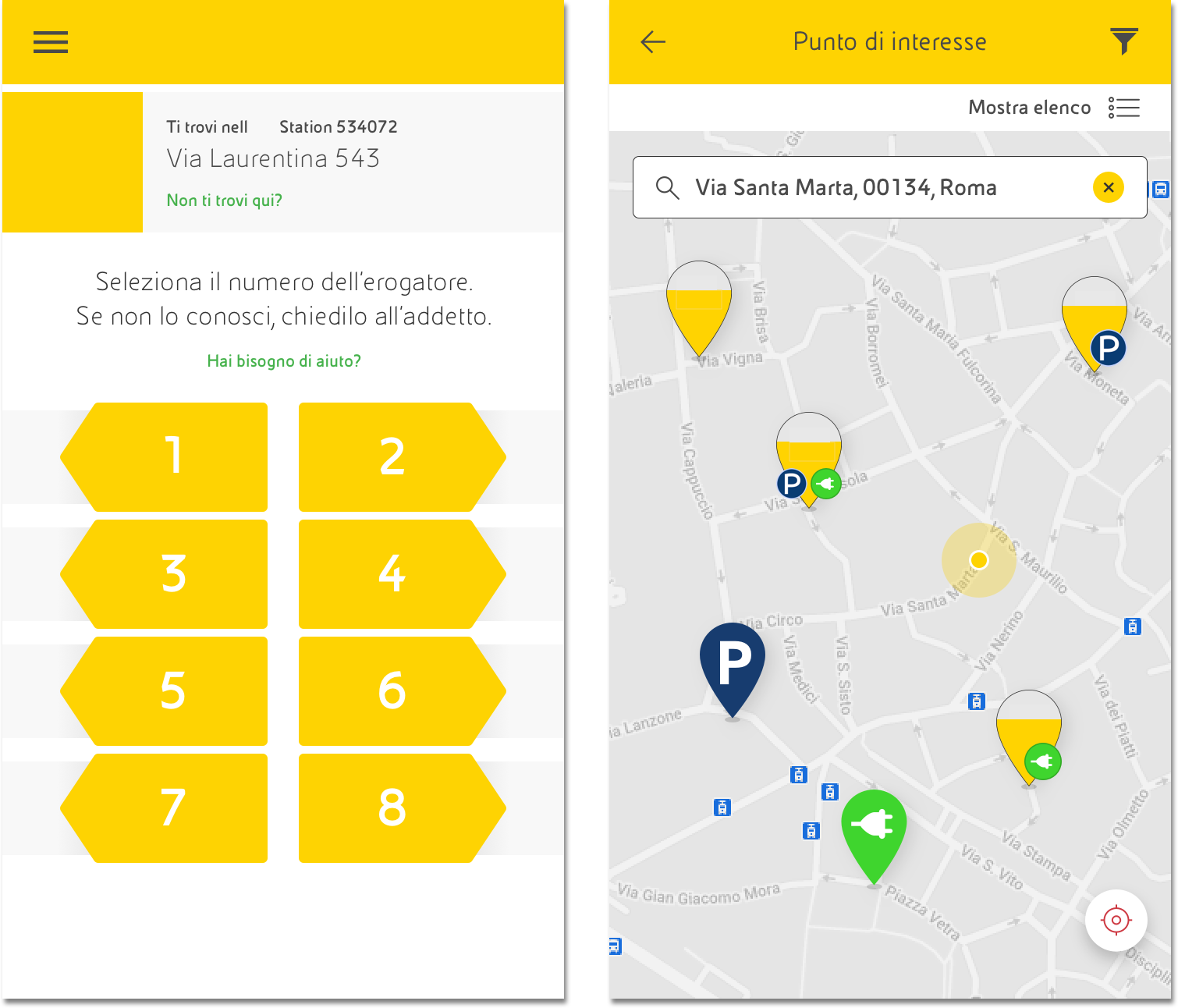Fuel station app
Improving the experience at the service station

Client
Confidential (Italian utility company)
Date
2021
Platform
Mobile app
My responsibilities
I was part of a design team made of 2 UX and 1 UI designers.
I reported to the client’s Communication Department.
I participated in the weekly SAL to check the progress of the project.
The client is one of the major utility and fuel suppliers in Italy. They had two mobile applications: one B2B and the other B2C. The applications offered many different services, the most important one was the possibility to pay at the gas station. The purpose of the project was to merge the two apps into a new one that can be easily scaled in the future to implement more services.
The process
01. Priorities
The apps offered various services: paying at the gas station, requesting the invoice, paying for parking, finding a gas station, using the car charging columns, participating in “instant win” initiatives…
Determining a hierarchy was fundamental to designing a good UX: Which services are used more often, and which are strategic to the client?
We defined the priorities through some workshops with stakeholders.
02. The new registration process
Of course, the registration process needed to be redesigned from scratch because of the changed business requirements. The new registration should be used by new customers but also by users enrolled in the previous apps who needed to add some data in order to use the new one.
Wireframes

Different scenarios
While designing the experience, different scenarios were taken into consideration.
A person at the gas station, with people waiting behind him, needs to complete the process as soon as possible.
A person away from a station, who opens the app, probably has different needs, like finding a gas station.
Thanks to geolocalization we were able to distinguish the users’ experience based on their location.

Designing the redundancy
Sometimes relying completely on tech systems is not the best strategy, for example, the geolocalization is not always perfect, and so is the license plate reader that should, when the user arrives at the parking, open the bar automatically.
So we had to design also alternative flows in case the bar didn’t open automatically (generating a QR code that can be read from the parking machine) or the geolocalization was not accurate (inserting manually the station code or choosing from the map for example)